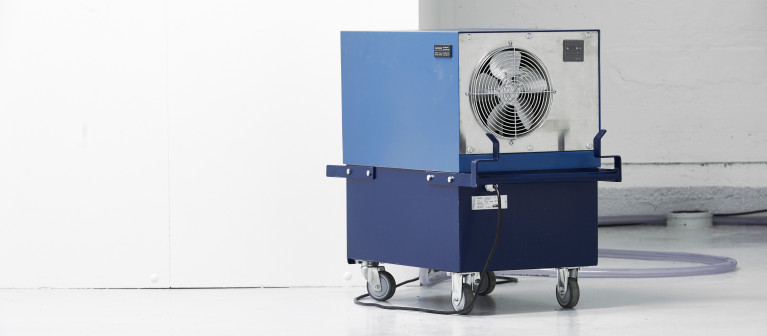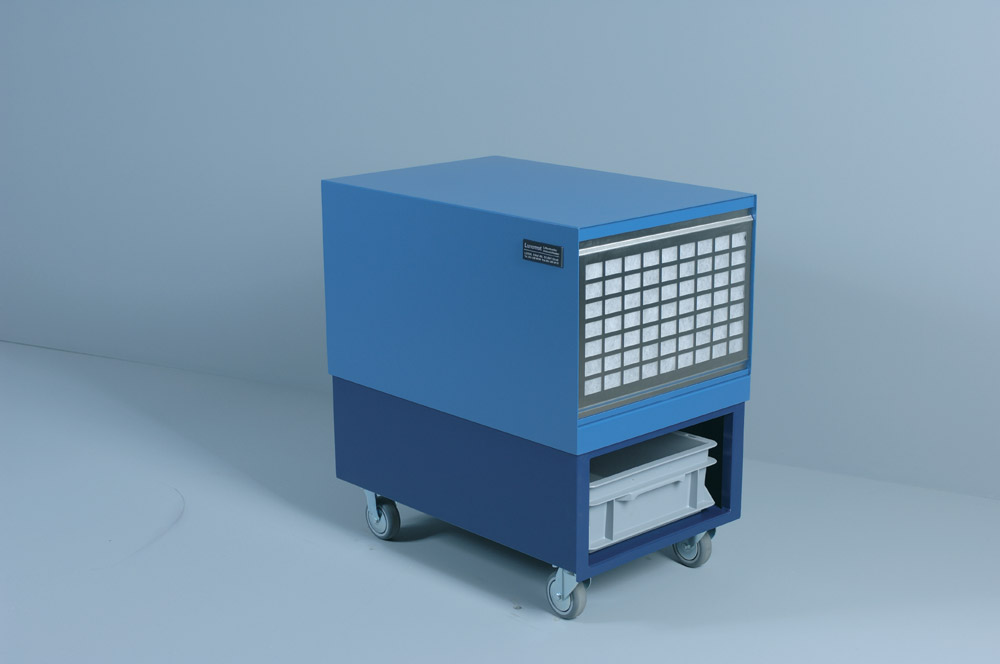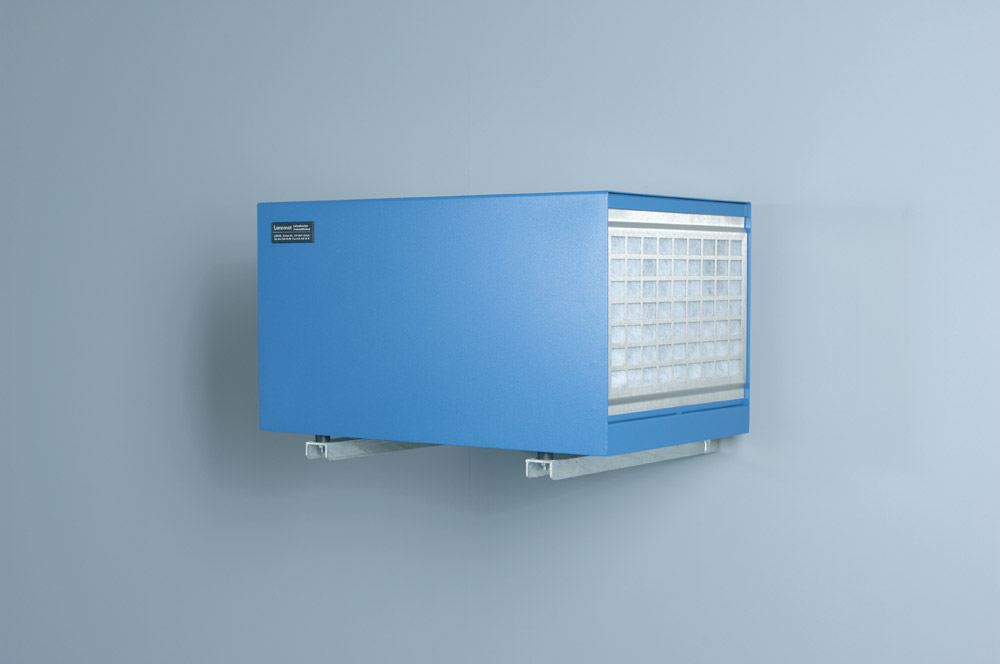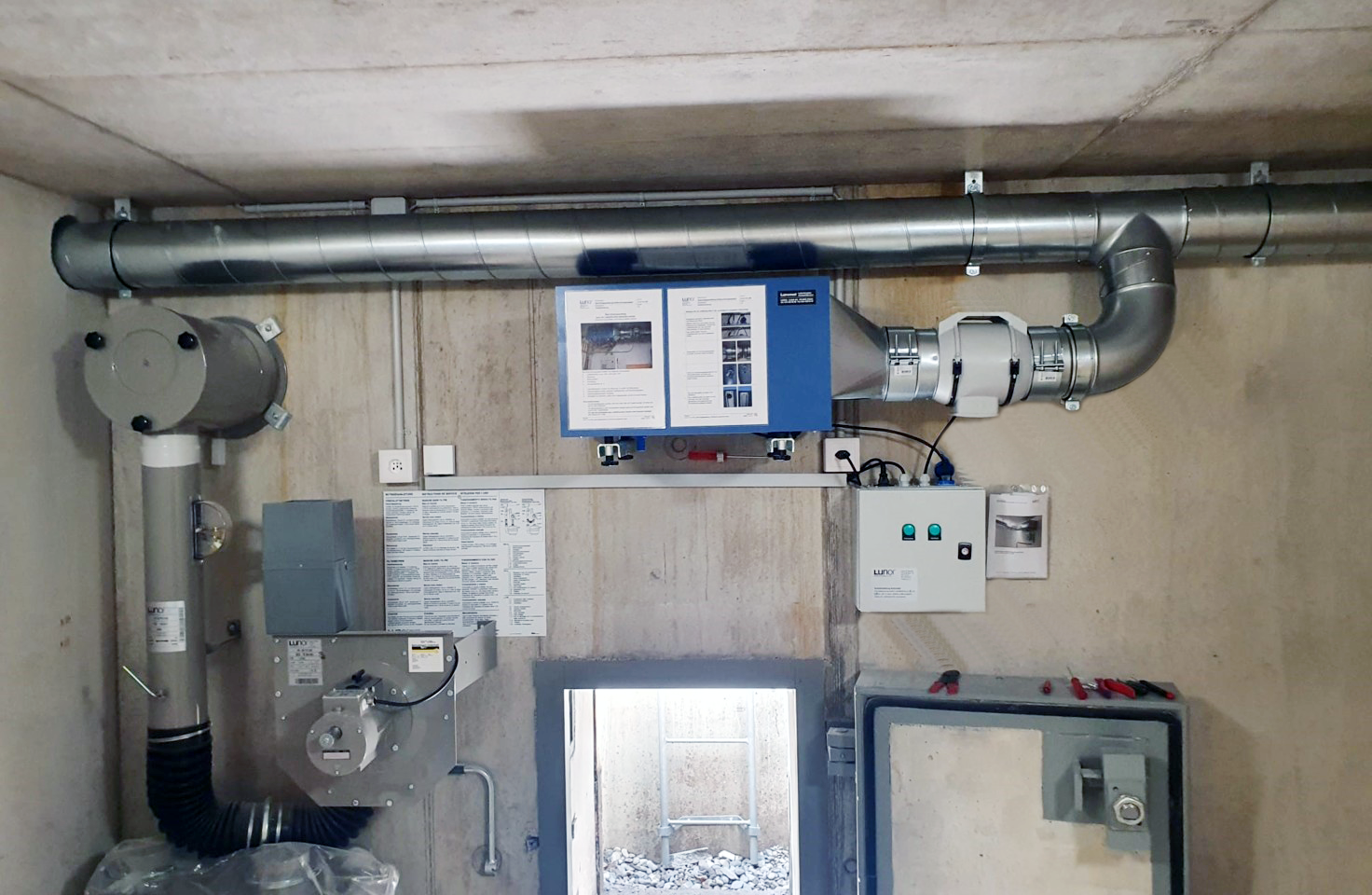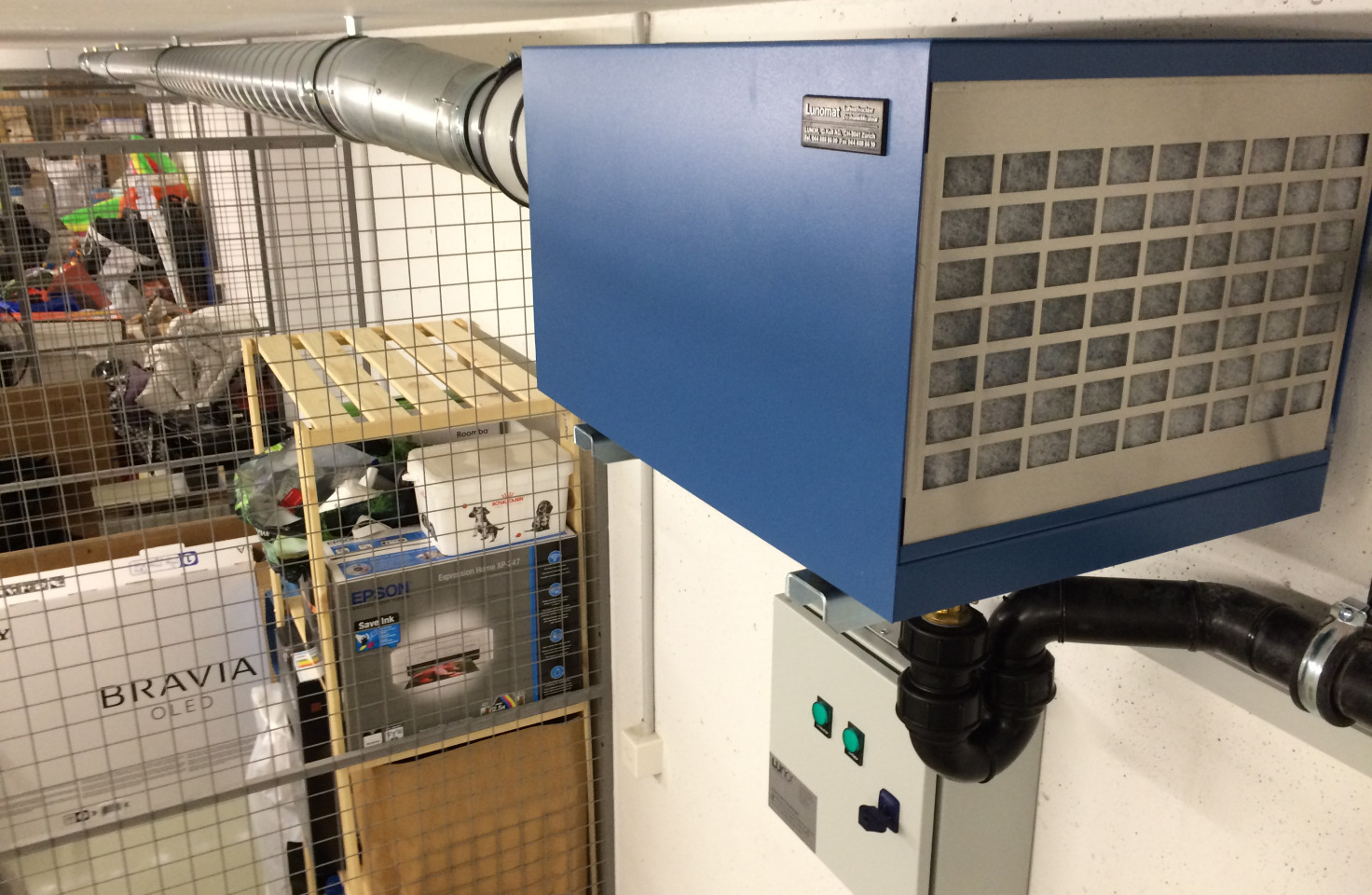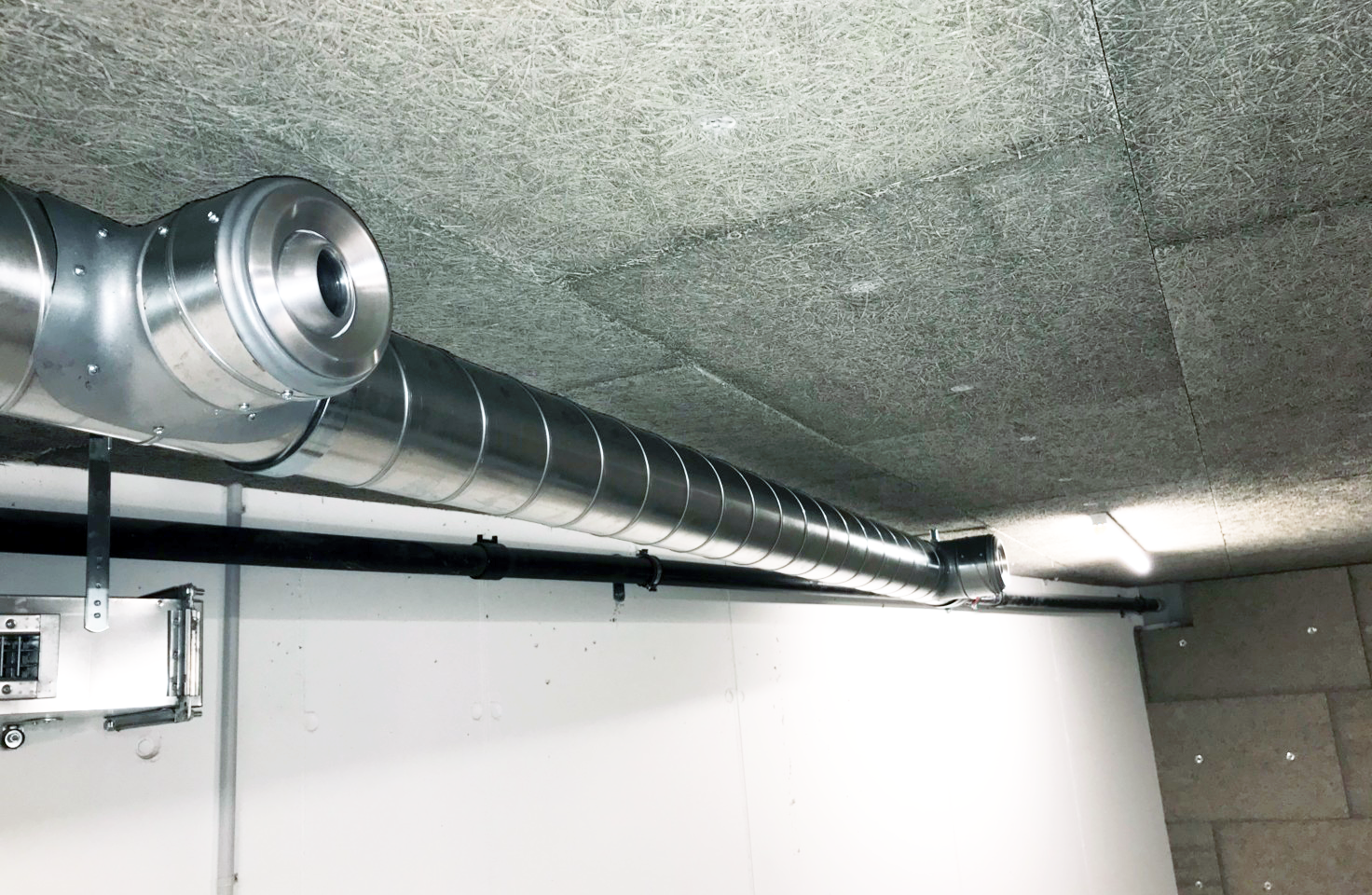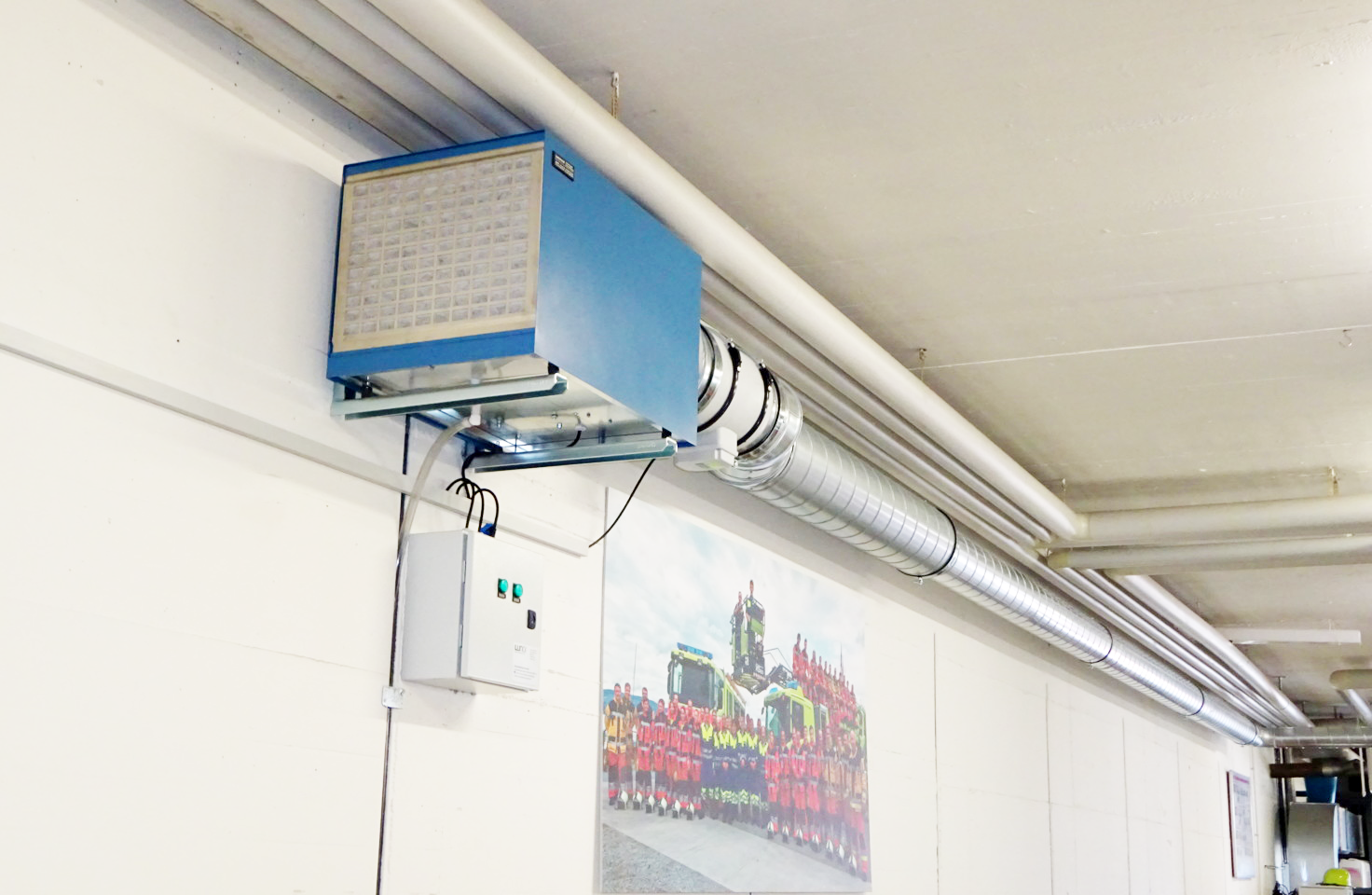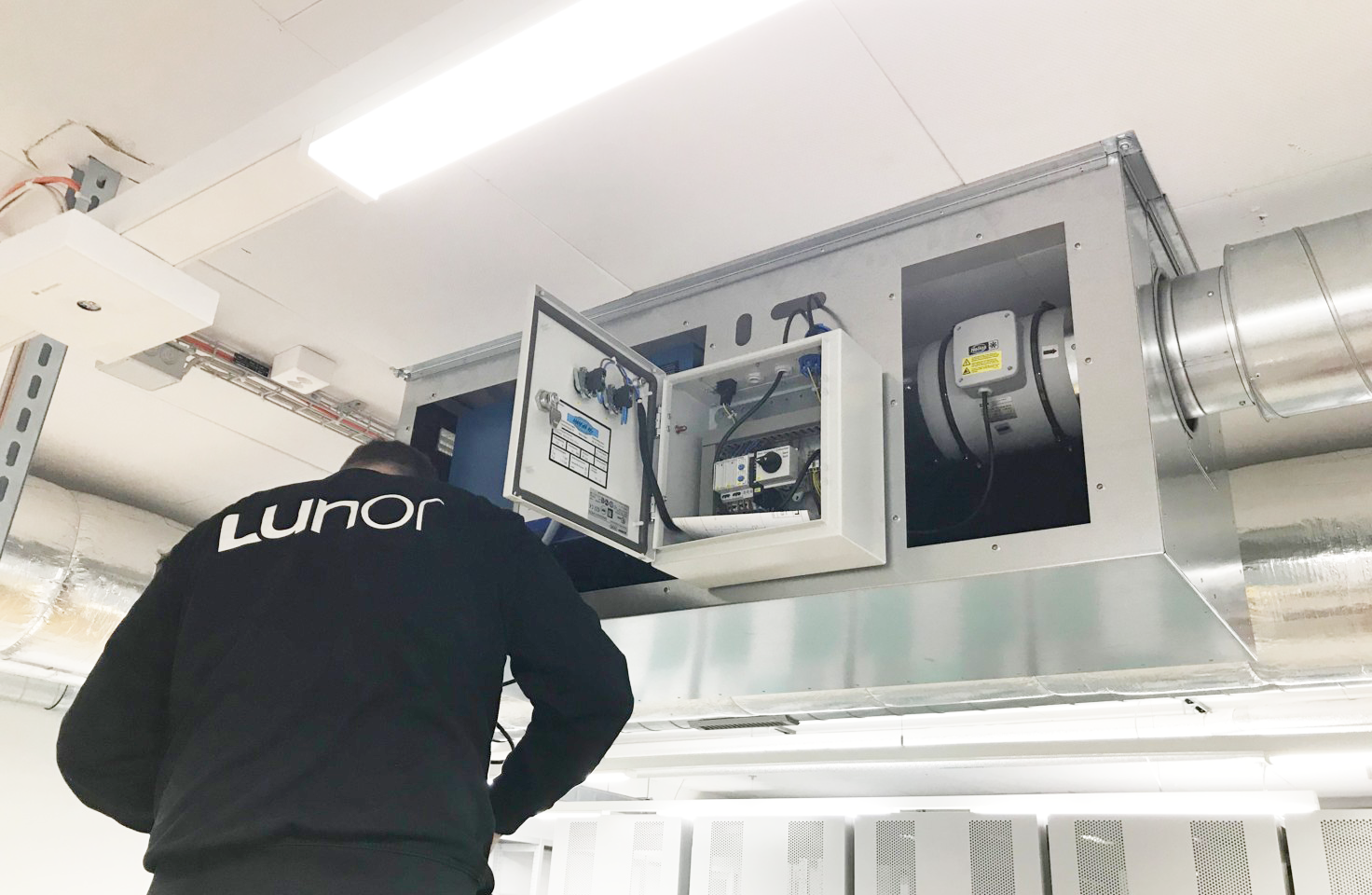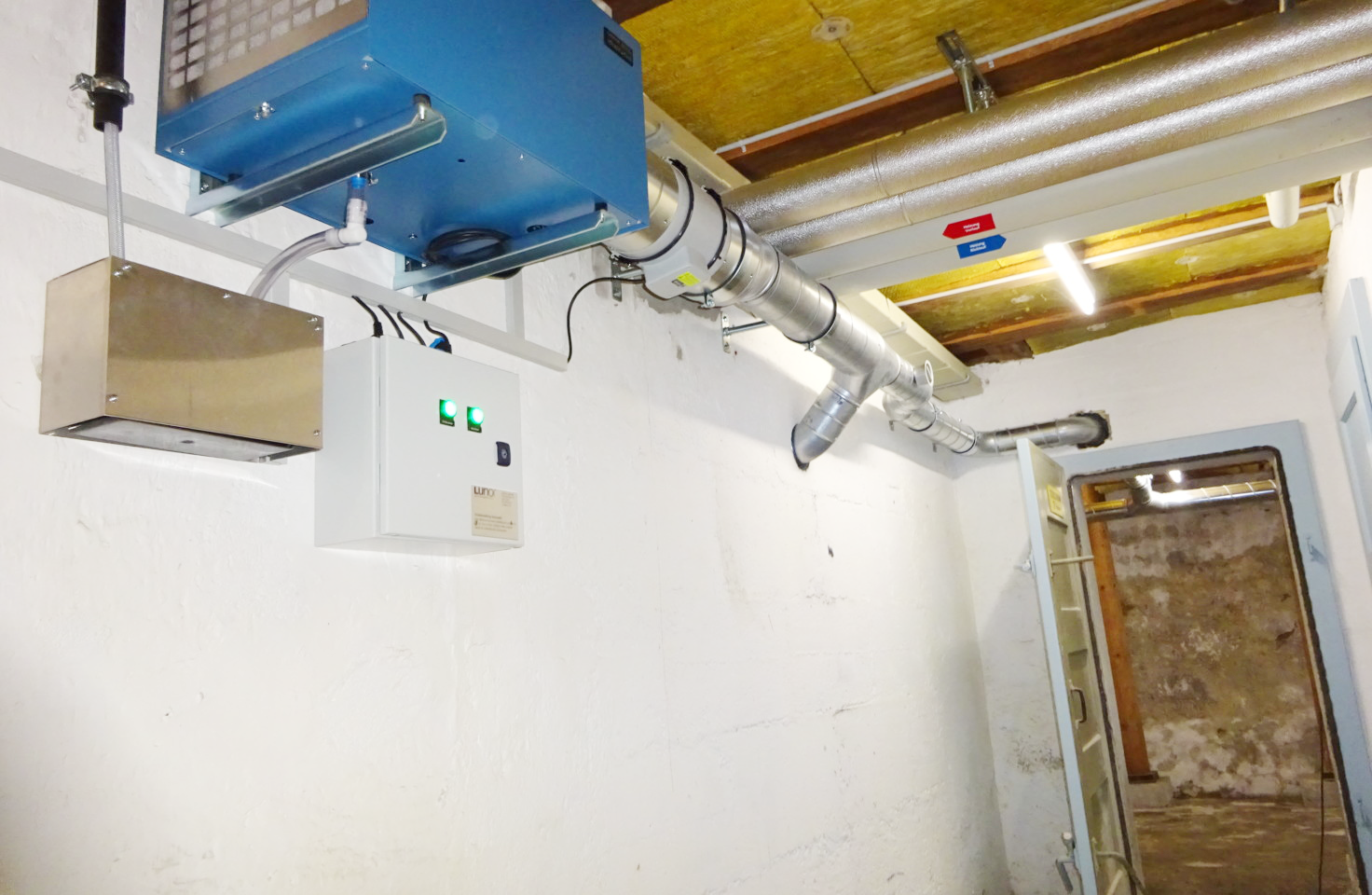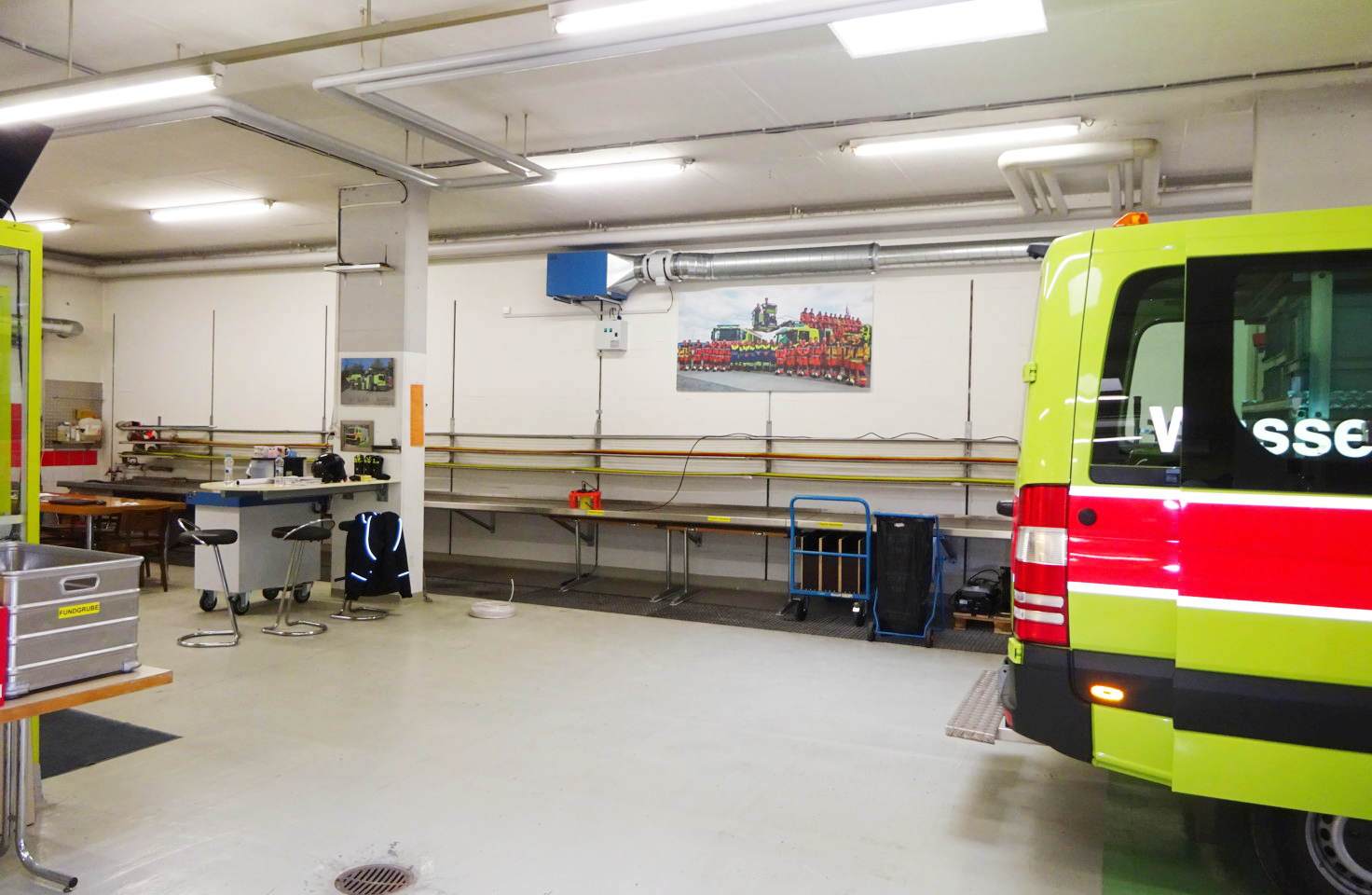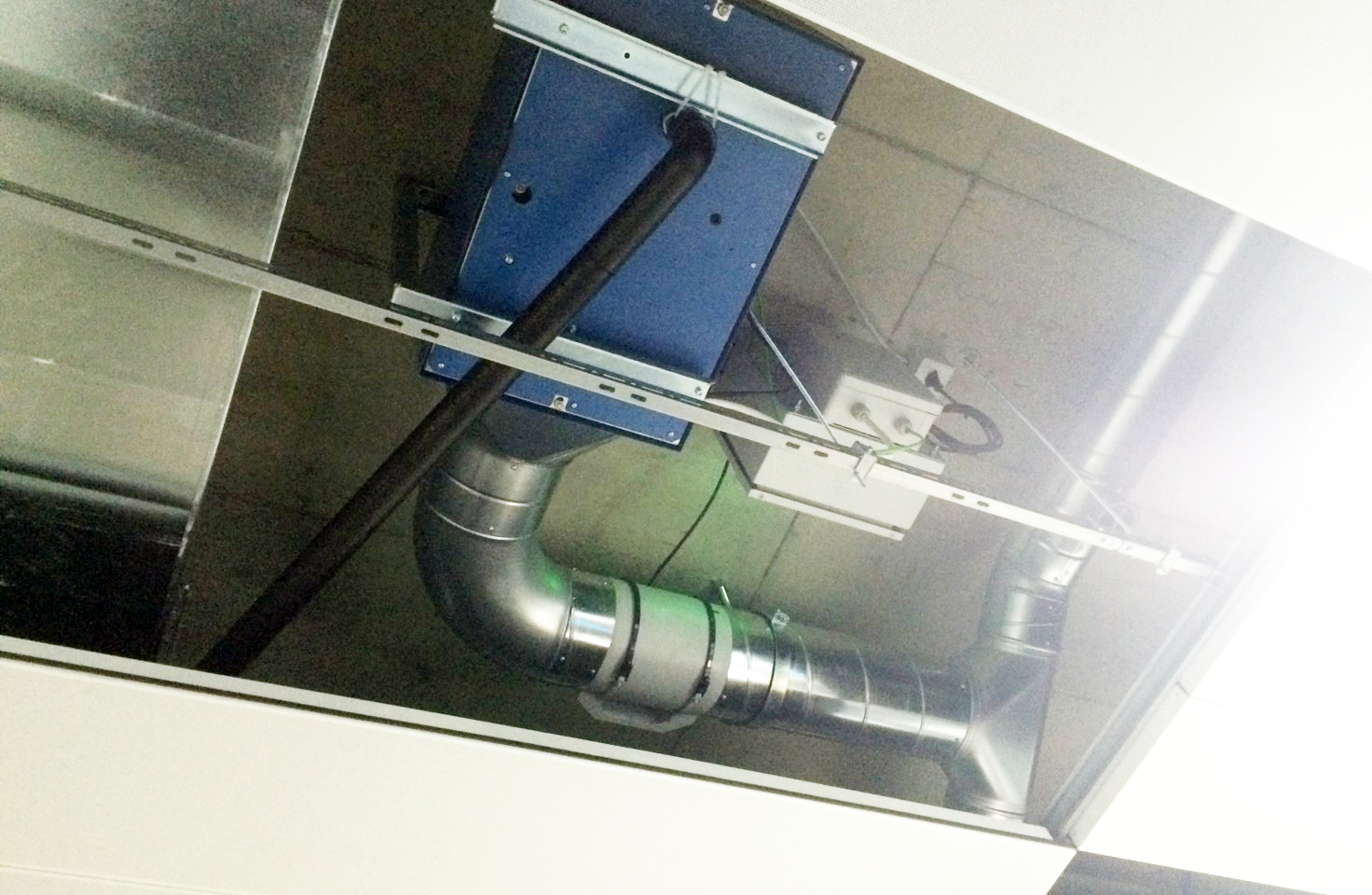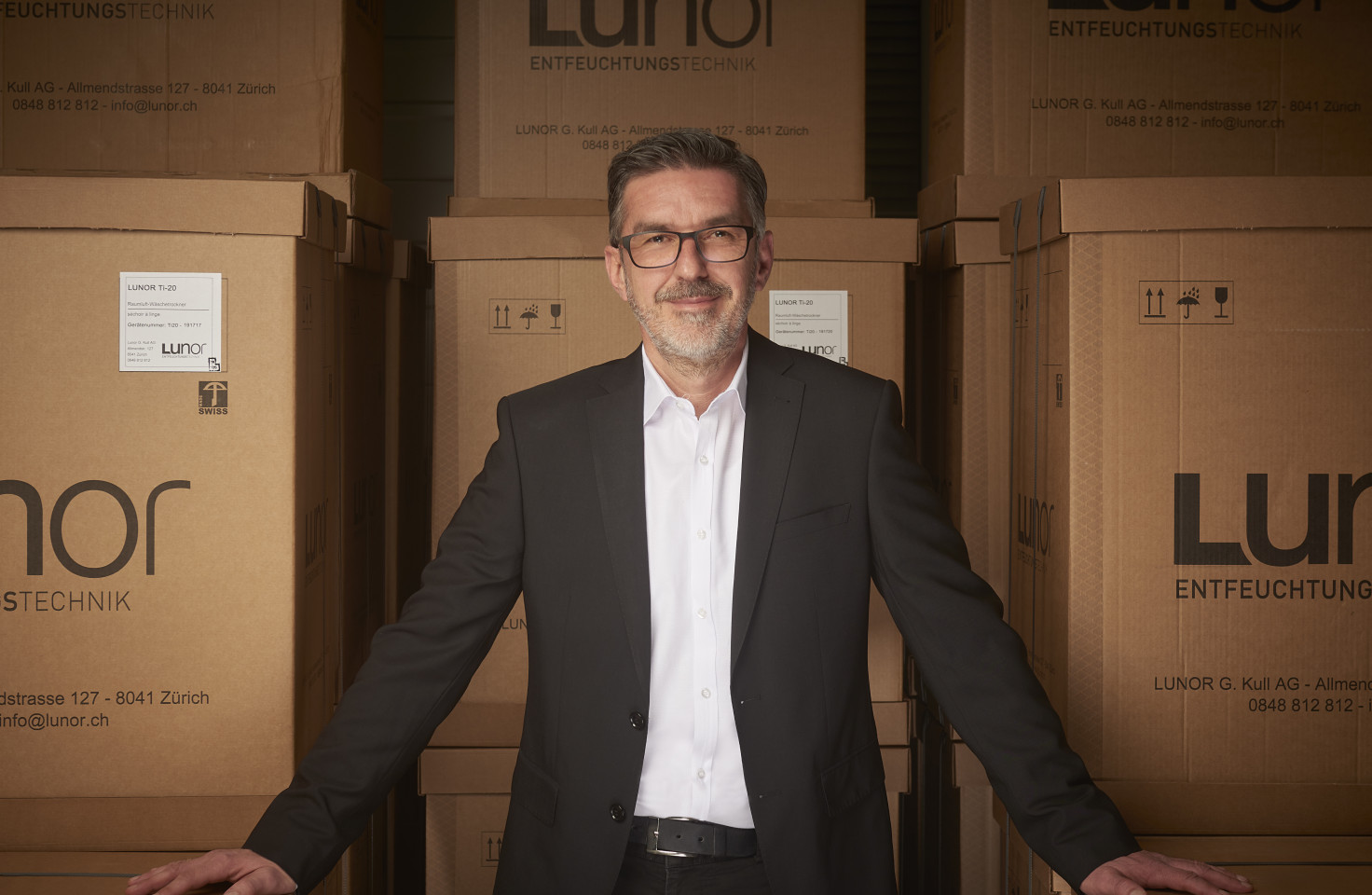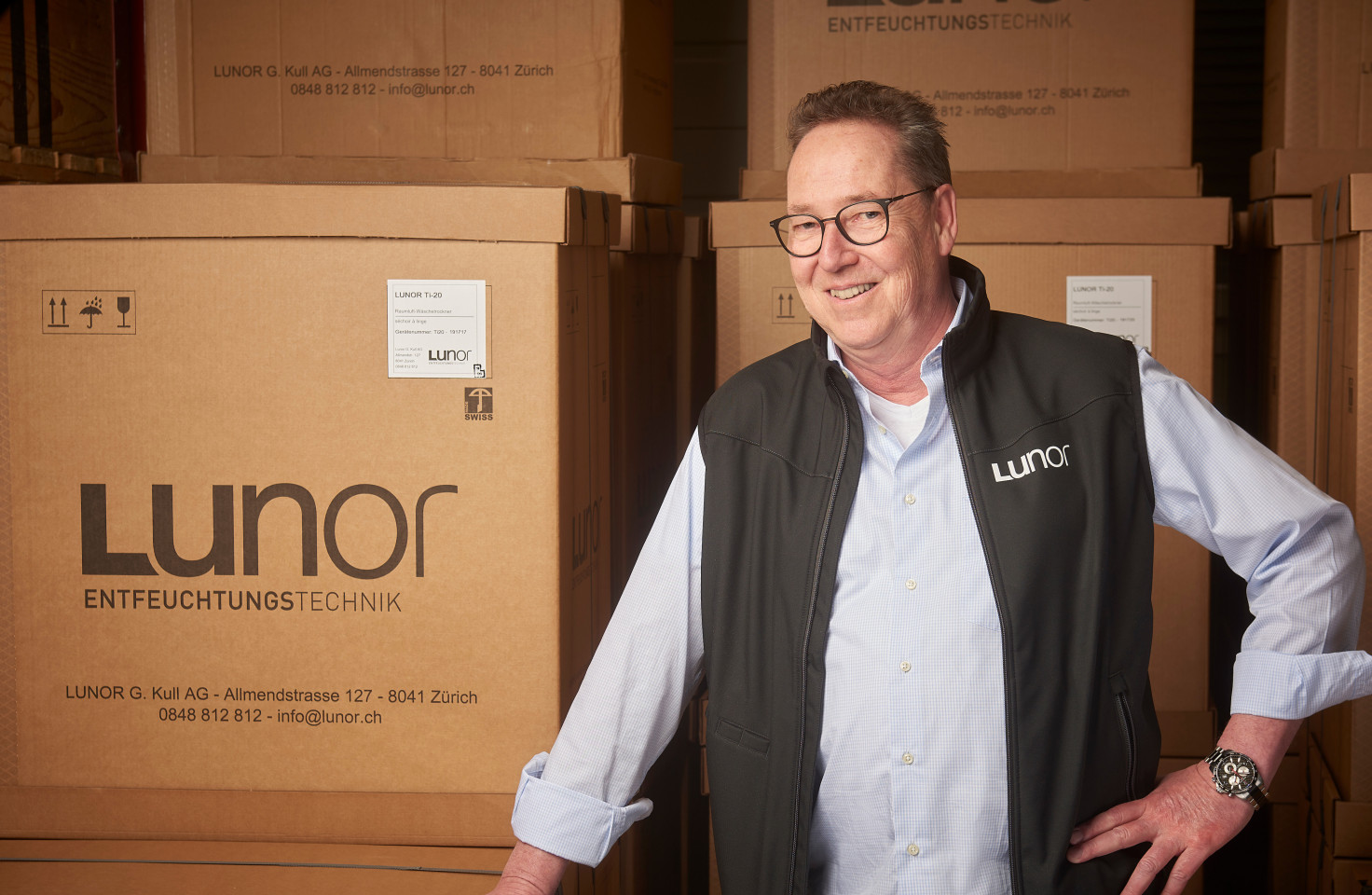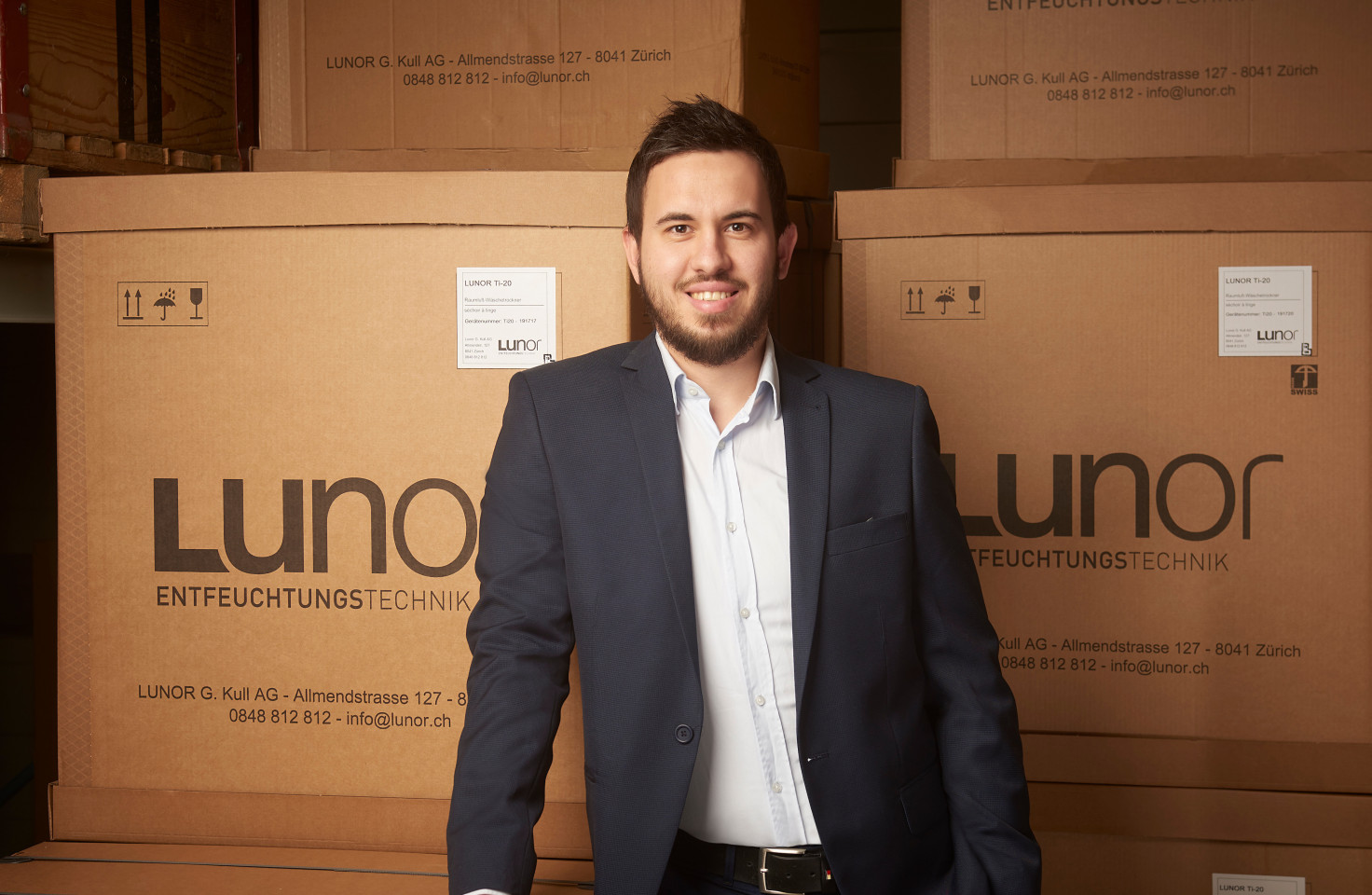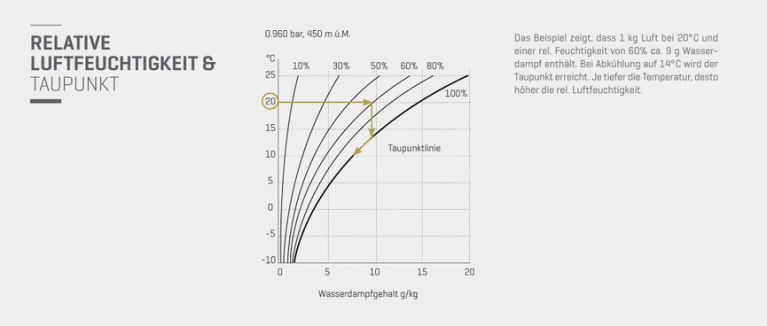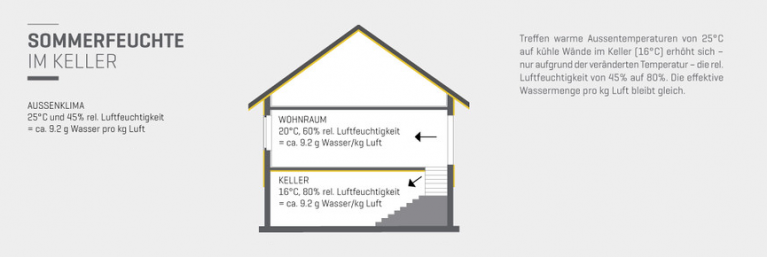An efficient cooling unit requires a well thought-out control system to ensure that dehumidification runs efficiently. The most important factor here is the positioning of the hygrostat (the measuring point), which determines the operation of the system. All Lunor dehumidifiers are hygrostat-controlled. Simple on/off control or control via a timer is not recommended.
The aim is to monitor and, if necessary, dehumidify the room climate. The hygrostat must therefore also measure the room climate. The sales argument "internal hygrostat" suggests safety, but often leads to incorrect measurement results and thus to unnecessary running times and energy consumption. If the hygrostat is placed in or on the appliance, it must be ensured that it measures the room climate and not a microclimate created in the dehumidifier.
Internal hygrostat.
In Lunor dehumidifiers, the hygrostat is always located outside the appliance. As standard on the housing, an external hygrostat is available on request instead of the hygrostat on the appliance. With our dehumidification systems
External hygrostat.
The external hygrostat allows the measuring point to be moved by several meters and into other rooms. Specifically, measurements are not taken in or on the dehumidifier, but several meters away from it. The external humidistat therefore contributes to more precise regulation of the humidity in the entire room to be dehumidified.
Adjust the humidistat correctly.
The dehumidifier is adjusted over a longer period of time. A hygrostat with display in the room (available from specialist retailers or from Lunor) shows the measured relative humidity in the room as a percentage. If this value is too high, turn the hygrostat down. If the value is too low, the value can be corrected upwards.
